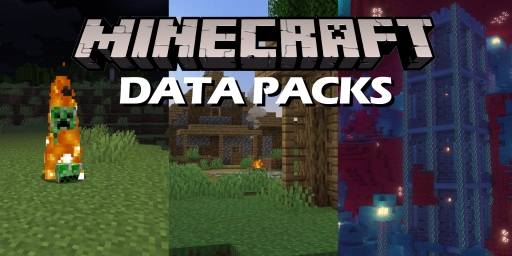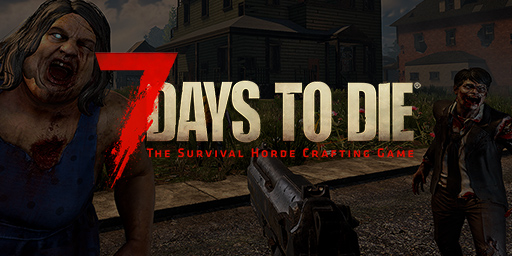Without mods, Minecraft can get a bit stale for many players. But installing mods can sometimes feel complicated. That’s where Data Packs come in—many players still don’t even know they exist. Thanks to a wide variety of packs and simple installation, you should definitely give them a try. We’ll cover everything you need to know, from installation to the best data packs to download. If you’re looking for a full modding guide instead, we’ve got you covered (Installing Minecraft Mods: A Step-by-Step Guide for Beginners) .
Minecraft Data Packs explained: Features and benefits
Data Packs are small improvement packages for Minecraft that can be added to the game without modding. They were introduced with the Aquatic Update 1.13 and have grown in popularity since. Key points:
- Data Packs are intended for the Java Edition.
- They primarily change recipes, loot tables, advancements, tags, structures, and functions (commands).
- They typically do not add new blocks or items—that’s only possible with mods.
This makes Data Packs perfect for players who find modding too complex but still want quality-of-life improvements or light gameplay tuning. There is some overlap between modpacks and data packs when things aren’t too complex.
Installing Minecraft Data Packs: Step-by-step guide (Java)
As mentioned, Data Packs are much easier to install than traditional mods and are supported by the game. The process is similar to resource packs. If you’ve used those before, you’re all set (Top 10 Resource Packs for Enhancing Your Minecraft Visual Experience) .
Find: Just like with mods and resource packs, you’ll need to search the internet for data packs, as they’re created by the community. The best and safest places are Modrinth, CurseForge, and Vanilla Tweaks. Stick to reputable sources with plenty of downloads/reviews.
Download: Pick the correct version of the pack and make sure it matches your Minecraft version and is labeled as a Data Pack. Some projects also exist as mods (Fabric/Forge)—don’t use those for this purpose. You’ll end up with a ZIP file on your computer.

Install for a new world: You can add Data Packs when creating a new world so they load right away. In the world creation screen, open More and select Data Packs. On the left you’ll see available packs, on the right the enabled ones. Click Open Pack Folder and drop the ZIP files in. Then activate them with the arrow and adjust the load order. That’s it—the pack is installed!

Install in an existing world: Open the world folder via the Worlds menu (Edit, then Open World Folder) or through the .minecraft folder. Place the ZIP files into the world’s datapacks folder. Start the world and, if needed, use /reload to apply changes. Use /datapack list to check active and available packs.
Install on servers: Of course, you can use Data Packs with friends, too. Upload the ZIP files to your server’s world/datapacks folder and run /reload or restart the server. You can find a detailed walkthrough in the wiki (Install datapacks for Minecraft).
Tips & troubleshooting:
- Check the pack_format in the pack (version compatibility). A mismatched version often causes load errors.
- Sort the load order: Packs loaded on top can override entries from below.
- Remove/disable: Move the pack to the left in the world menu or delete it from the datapacks folder and run /reload.
- Make backups before major changes and test new packs in a copy of your world.
The best Minecraft Data Packs: Recommendations
To wrap up, here are a few cool data packs so you can jump right in! This is just a selection—mix and match as needed for your perfect vanilla-plus gameplay.
Official Minecraft Data Packs and Experiments

Mojang, the developers of Minecraft, use built-in data packs and Experiments to test new features before they ship as updates. You’ll find them when creating a world under the Experiments tab or in the Data Packs menu. Note: In the Bedrock Edition, these options are called Experiments and aren’t a direct data-pack export like in Java.
Currently, the following experimental options are available, among others:
- Minecart improvements: Long-awaited changes make minecarts faster and more convenient.
- Redstone experiments: Reworked redstone mechanics improve the reliability of complex contraptions.
- Balanced villager trading: Adjusted trades (e.g., less powerful enchantments), sometimes dependent on the biome. Some improvements have already made it into the game.
Community data packs: Top picks for Minecraft

Here’s a selection of popular data packs. Watch version compatibility if you combine several.
- Dynamic Lights: Makes many things emit light for more atmosphere. Torches in hand, glowing mobs, and more.
- Timber: Fells entire trees when breaking the bottom log—a huge time-saver, especially in jungles/old-growth taiga.
- Veinminer: Mines ore veins in one go; optionally as an enchantment for better balance.
- Graves: Spawns a gravestone with all items on death—fairer than Keep Inventory, safer than dropping.
- Dungeons and Taverns: Enlivens the world with many new structures and more exploration.
- Hearths: Improves several Nether biomes (Wastes, Forests) for more engaging travel.
- Crafting Tweaks: Handy recipe tweaks like more stairs per craft, wool to string, or craftable name tags.
Conclusion: Data Packs for better Minecraft gameplay
Data Packs are a great way to smartly adjust mechanics and improve the feel of the game—without the heavy setup of mods. They integrate smoothly into new and existing worlds, work well on servers, and enhance the classic vanilla experience in meaningful ways. Rent one of our Minecraft servers and try out a few packs together with friends. Mojang’s Experiments are also worth a look if you want to preview upcoming changes early.
More interesting articles
Installing Minecraft Mods: A Step-by-Step Guide for Beginners
Top 10 Resource Packs for Enhancing Your Minecraft Visual Experience
How to Install and Use the Best Minecraft Shaders




